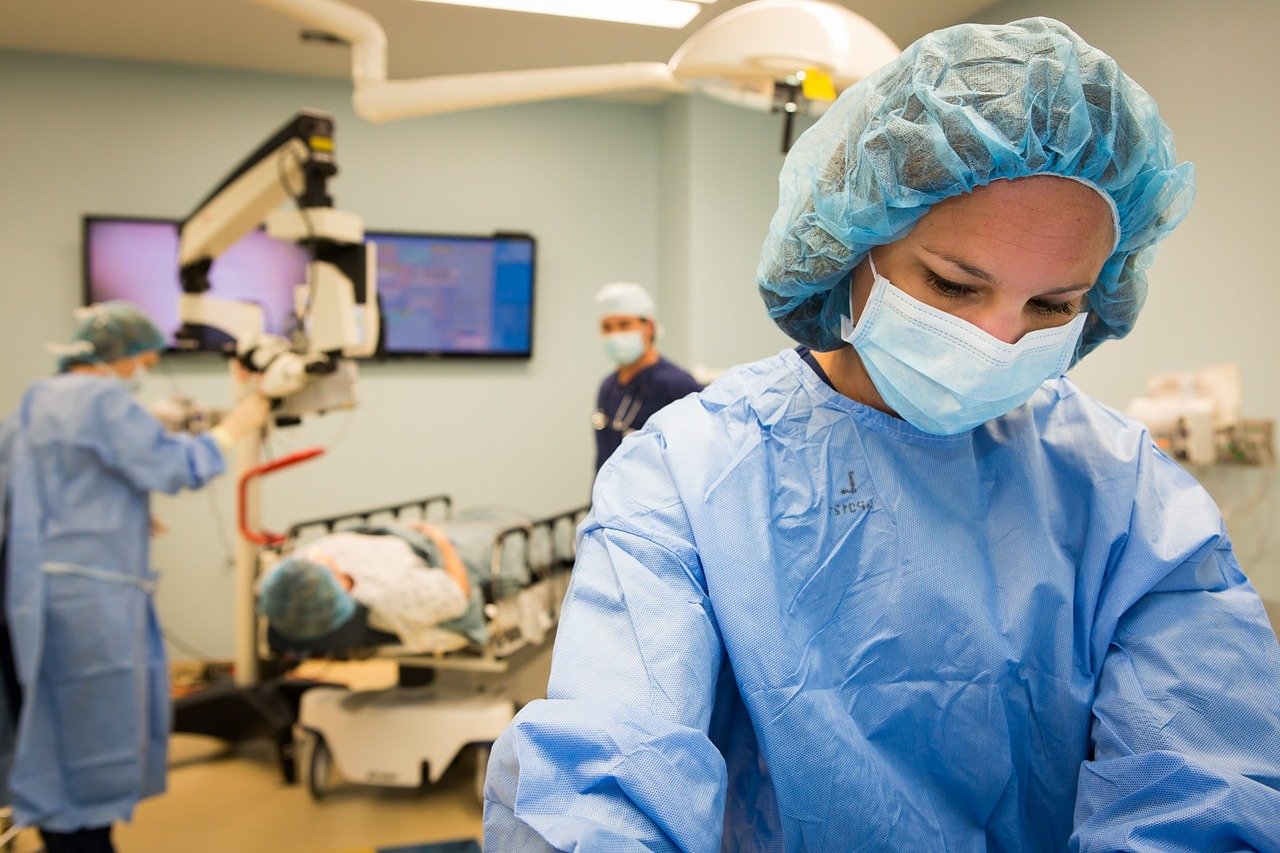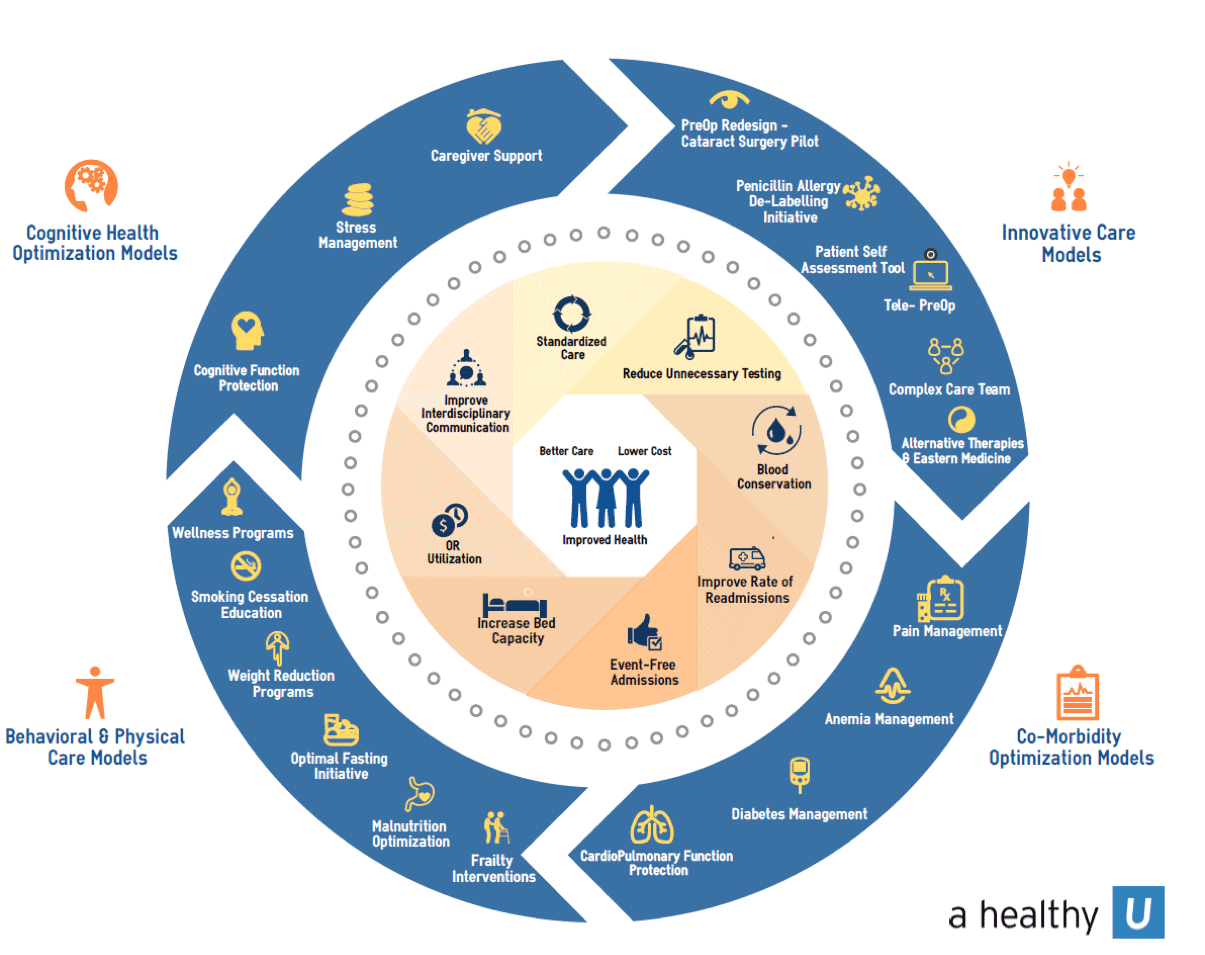
Representative image. Image by Jason Shivers from Pixabay
In the technical parlance of procedural medicine and curative health management, it is often said that any surgical procedure has to be approached with great caution and depth of thinking. This is because surgery in its correct terminology is known as “Invasion”.
Surgeons are united in their opinion that surgery being a technique can be mastered and perfected to a point, but it is the periphery of events surrounding the operation which have to be viewed with abject seriousness and addressed accordingly.
Indeed, the recovery, subsequent reinstating of the patient to his optimal health profile and the true “success” of the surgical operation can be evaluated only if the before and after events of the operation actual are correctly and clinically managed.
Recognizing the scientific value of this aspect, a veritable number of facets have been conjugated together in an emphatic branch of medicine known as Perioperative Medicine. It is the magical but tangible boundary of wellness which has to be first constructed and then continuously nurtured if the patient has to be cured and then and only then can sustained Wellness for the patient can be achieved.
Perioperative medicine is the holistic care of patients accorded in the totality of that time frame from the point of contemplation of the surgical procedure to the complete recovery, however, it significantly excludes the operation, procedure or invasion actual.
It is truly a very multidisciplinary approach to health management and the expertise of several other areas of medical sciences is utilised to the fullest.
Perioperative care may be provided by an anesthesiologist, intensivist, an internal medicine generalist or hospitalist, nursing expert, a pathologist, all working in close tandem with surgical colleagues. Extreme and uncompromising execution of Good Clinical Practices (GCP), is a mandatory undertone for the entire enterprise.
Perioperative medicine encompasses the care of the patient being prepared for, being subjected to and finally recuperating from a surgical procedure.
In the actualisation of perioperative medicine, the efforts by the experts are orchestrated and the surgeon, anesthesiologist, intensivist and medical consultants work in total synchrony.
The medical knowhow which is signature to this distinctive field includes many facets. The assessment, review and evaluation of operative risk and complications, of patient-specific risks based on his clinical history, of methods to reduce this tangible and perceived danger, and of the management of medical illness during this critical time period are all very integral parts of this fascinating field of curative science.
Evidence supporting best practices in perioperative medicine is in a phase of amplification, though historically this field has been directed by common practice and experience. It remains a field governed primarily by the art of medicine and great empathy for the patient because TLC(Tender Loving Care) is a very valuable part of this practice.
One of the nodal realizations that have led to in-depth regard and understanding of perioperative medicine was the assessment of patient mortality due to complications arising from factors other than the surgery actual.
A specific term has been coined to address this occurrence, known as perioperative mortality which can be defined as any death, regardless of cause, occurring within a time period of thirty days after surgery either when the patient is hospitalised or even when he has been discharged. The statistics available are truly appalling…..worldwide, 4.2 million people are estimated to lose their lives within 30 days of surgery each year.
As a patient has to undergo transition through the three phases of the operative process, namely preoperative, intraoperative, and postoperative, the perioperative nurse is one of the principal medical personnel who connects to this area of medicine.
Perioperative nurses help plan, execute and assist the treatment for patients undergoing surgery. They are often the staff who is available for the patient and definitely the one who is completely in the know of the intricacies of the patient’s profile at every stage.
They are required to assess and evaluate the condition of the patient and are even accurate experts for risk assessment of the case. These (Registered Nurses)RNs are thoroughly involved in the care of patients before, during, and after the surgical invasion.
Their workspace is in hospital surgical departments, ambulatory surgery units, clinics, or physicians’ offices and additionally they are available as on-call caregivers.
Preoperative patient management is a dynamic process in which patients and physicians are interdependent and need to be totally synchronised in their ethos and mental makeup. This process is aimed at optimising the outcome from a surgical procedure and definitely has to be thorough, streamlined, educational, and cost-effective, with physician and patient satisfaction as the final goal and sustainable wellness as the ultimate outcome.

Source: uclahealth.org
Postoperative care after a surgical procedure often includes pain management and wound healing care. Postoperative care begins immediately after surgery and continues for the duration of the hospital stay and may continue even after hospital discharge.
The significant aspect of this in the case of the patient is that he has to be helped to overcome very nodal occurrences like the post anaesthesia “haze”. He has to be accorded due empathy and handholding, as the pain and accompanying misery is a serious obstacle in the “feel good” state, and analgesics may make the patient groggy and dull.
An area to be compulsorily be addressed is medications which are part of the patient’s routine as these have several potential interactions with drugs used during surgery.
Incidentally, few situations prohibit concurrent administration and hence, other drugs must be stopped, replaced, or temporarily administered by another route. Protracted advice on the optimal choice of alternative treatments has to be necessarily taken from drug information or clinical pharmacists.
Factors like dose adjustment and half-life of routinely used medications have to be considered. Several medications are continued through the perioperative period, with the last dose taken with a sip of clear liquid even up to two hours prior to the invasive procedure, and then resumed immediately during recovery.
The article now needs to address nodal population groups for the reader to gain a rewarding insight into perioperative medicine. Hence, female patient care becomes a very interesting area to speculate about. Medical and clinical nurturing for women who are slated to undergo the gynaecological procedure is challenging.
The present-day scenario in medicine is laden with issues involving quality of caregiving, professional limitations, availability of information, the patient’s input into personal care, and logistics.
Moreover, some conflict of interests has arisen between surgical experts and other specialists due to technological enhancement in areas like laparoscopy, scanning procedures, robotics, female pelvic medicine and reconstructive surgery.
These conflicts in administering care in female patient care are further complicated by a distinct transformation in the demographic profile in this patient population.
Today, the population comprises of a young, healthy group to an increasingly larger group of geriatric patients which includes several patients ridden with patients who have chronic diseases like morbid obesity and diabetes.
Generically, all patients should undergo surgical procedures in the most stable and favourable condition with a smooth continuation of their chronic medication. Accordingly, this medication should be continued until the day before surgery in most patients. The preoperative period should be used to evaluate the totality and quality of medical treatment. Some pertinent questions to be addressed are as follows:
- Are all patients with CVD(Cardiovascular Disease) and hypertensive indications for beta-receptor blocking agents, ACE-inhibitors and statins treated with these drugs?
- Is the condition of diabetes being adequately addressed and correctly treated?
- Are the doses of the medication for the treatment of thyroid dysfunction within the optimal range?
All the above parameters and many other indicators of specific medical conditions are empirically measured and they are pathologically assessed.
If there is some scope for improvement, extreme caution has to be exercised to address adjustments and the same have to be actualised well in advance.
In contrast, there are no recognised situations in which medication should be started preoperatively in the absence of a pre-established chronic indication. Management of antiplatelet agents and coumarins requires careful consideration.
The hazards of continuing and withholding treatment must be evaluated. In patients who have suffered a cardiovascular event and/or have undergone (coronary) revascularisation, elective surgery must be delayed for weeks or months depending on the circumstances and the devices used.
Caution has to be exercised before the abbreviated or prolonged use of some drugs which substantially increase the chances of bleeding and haemorrhage after the operation. These include aspirin, coumadin, Ibuprofen and Celebrex to name a few.
If the patient is comfortable and kin to complementary healthcare, there are a few OTC ( over-the-counter) herbal products like ginseng, ginger tablets, certain herbal teas may also affect bleeding.
The expert on anaesthesiology usually delivers the medications for anaesthesia through the intravenous route, usually invading the upper limb of the patient. In the case of children, a mask may be used for anaesthesia.
Special regimens beyond the broad and normal scope of perioperative medicine are used for pregnancy, premature birth and geriatric patients.
On one side of the spectrum are minor procedures like dental surgical invasions and on the other side are protracted, intensive and intricate procedures that may require several hours of operation proper and general anaesthesia, all in all, perioperative medicine is a valuable and indispensable tool of curative medicine.
Patient counselling and an expansive and inclusive explanation to the patient and the family are needed.
Recent developments in perioperative practice, emphasizing issues that are of greatest concern in paediatric patients, are reviewed in this article. Many areas bear further evaluation in the evolving field of perioperative medicine.
Effective techniques of psychologic preparation for children and their parents in an era in which the family rarely encounters the hospital environment before the day of surgery.
Application of newer intraoperative anaesthetics, such as new narcotics and muscle relaxants, to shorten paediatric ICU stay while maintaining safety and comfort. Critical evaluation of recent methodology of pain management to optimize comfort while minimizing the expenses.
An ever-growing number of older subjects are undergoing surgical procedures these days due to sophisticated perioperative monitoring and surgical and anaesthetic techniques which are advanced and scientifically sophisticated.
Elderly patients often have multiple comorbid conditions which limit their motor capacity and recovery and even increase the risk of mortality. The geriatric subject can move successfully on the path of recovery only if both these aspects are moderated optimally.
In the case of diabetic patients, surgery would preferably be scheduled for the early hours in the day. It is also recommended that blood glucose in the preoperative tenure is carefully monitored. Hypoglycaemia or blood glucose values less than 70 mg/dl are treated with glucose tablets/gels or intravenous dextrose solutions.
A very valid realization about the notably significant area of healthcare, in the last decade, is that there is a dire need for education and capacity building.
Hence, there has been a concerted effort by various anaesthesia representative bodies to incorporate greater teaching into the management of patients during the perioperative period. Additionally, an annual summit has been held in the US, and various courses exist to encourage this field of medicine
In the days to come, there is no doubt that Perioperative Medicine will be enhanced to its rightful place as a mandatory and very challenging area of wellness management and veritable inroads would be made into hitherto unknown realms of knowledge through protracted research efforts.
The author acknowledges the use of authentic medical literature from reputed media to structure this article.
The contents of this article are not meant to be a substitute for medical advice, diagnosis, or treatment, and should not be construed or treated as such. Always seek the advice of your physician or another qualified health provider with any questions you may have regarding a medical condition. We make no representations, warranties, or guarantees, whether express or implied, that the content on our website is accurate, complete, or up to date.
Sign up for the QuackTrack.org newsletter below!














